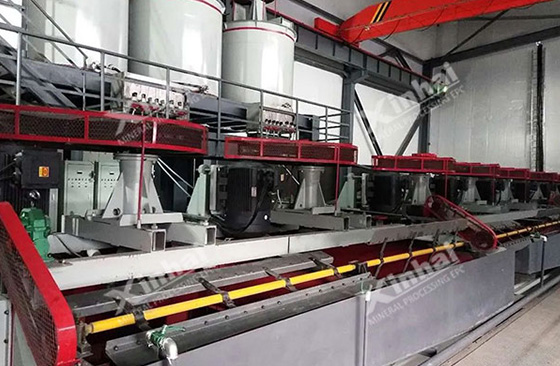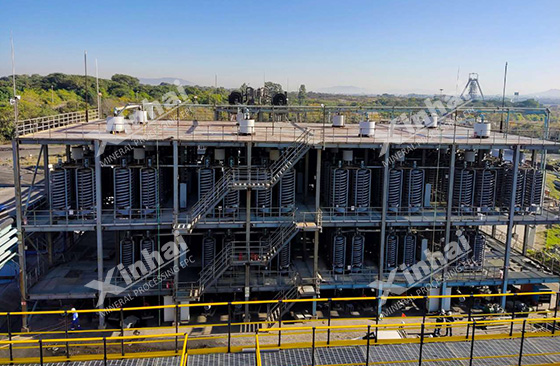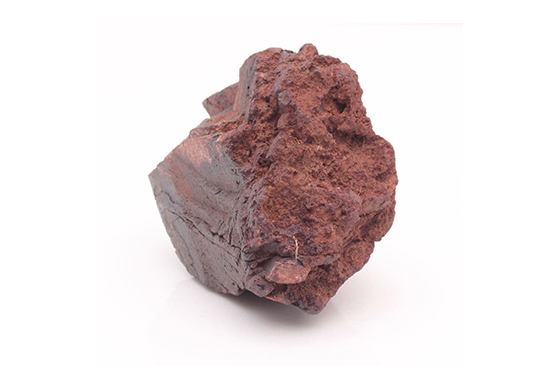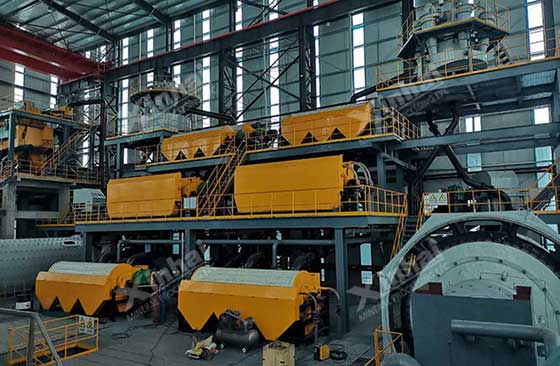With the rapid development of the global steel industry, the demand for iron ore is also growing. However, the increasing scarcity of high-quality iron ore resources has made the effective utilization of complex and difficult-to-select iron ore an urgent problem to be solved. Complex iron ore is extremely difficult to beneficiate due to its complex mineral composition, fine mineral distribution, high impurity content and other characteristics. Traditional beneficiation processes are difficult to meet the requirements of quality improvement and impurity reduction. Therefore, the development and application of new and targeted iron ore beneficiation technologies are crucial to improving the utilization rate of complex iron ores. This article will discuss in detail the iron ore beneficiation technologies and applications of several complex and difficult-to-select iron ores, including siderite, limonite, composite iron ore and oolitic hematite.
.jpg)
Use the table of contents below to navigate through the guide:
01Siderite iron ore beneficiation technology
The theoretical iron grade of siderite is low, and it often coexists with minerals such as calcium, magnesium, and manganese. Therefore, it is difficult to improve the grade of iron concentrate by physical dressing methods, and roasting methods can greatly improve the grade of concentrate. The economic methods for siderite iron ore beneficiation mainly include gravity separation and strong magnetic separation, but these two methods are difficult to effectively reduce the impurity content in the concentrate. The combination of strong magnetic separation and flotation can effectively reduce the impurity content in the iron concentrate.
02Limonite iron ore beneficiation technology
Because limonite is rich in crystal water, it is difficult to increase the grade of iron concentrate to more than 60% using physical beneficiation methods. The roasting method can significantly improve the grade of the concentrate. However, limonite is prone to mudification during crushing and grinding, resulting in a low metal recovery rate.

The iron ore beneficiation methods of limonite include reduction magnetization roasting-weak magnetic separation, strong magnetic separation, gravity separation, flotation and their combined processes. Among them, the processes verified by industrial practice include strong magnetic separation and strong magnetic separation-positive flotation combined process. However, limonite is easy to mud, and the recovery rate of strong magnetic separation equipment for minerals with a particle size of less than 20μm is low, coupled with the limitation of the effect of flotation reagents, resulting in poor overall beneficiation indicators. In addition, although the reduction magnetization roasting-weak magnetic separation process can improve the grade of iron concentrate, the cost is high, so this type of iron ore has not yet been widely used.
03Composite iron ore beneficiation technology
Most iron ores contain more than two kinds of iron minerals. The more types, the worse the selectivity. When the paragenetic minerals in this type of ore are mainly weakly magnetic iron minerals such as hematite, specularite, and goethite, it is more difficult to select. Conventional beneficiation processes can be used to separate this type of iron ore. However, when the ore contains siderite or limonite, it is difficult to improve the grade and recovery rate of the iron concentrate. Combined processes such as weak magnetic-strong magnetic-flotation and magnetic roasting-reverse flotation can be used.

04Oolitic hematite iron ore beneficiation technology
Oolitic hematite has the characteristics of extremely fine embedded particles, coexisting or mutually enveloping with siderite, oolite and phosphorus-containing minerals, and is one of the difficult-to-treat iron ores. The common method for treating this type of ore is reduction roasting-weak magnetic separation process. However, the technical difficulty lies in the need for ultrafine grinding, and the existing beneficiation equipment and reagents are difficult to effectively recover fine iron minerals with a particle size of less than 10μm, resulting in the failure to fully utilize this resource.
To solve this problem, we can use ultrafine grinding combined with strong magnetic separation or flotation after selective flocculation (agglomeration), or use the high-efficiency mineral processing process of reduction roasting-ultrafine grinding-selective flocculation (agglomeration)-weak magnetic separation or flotation. These processes or combined mineral processing technologies can effectively improve the mineral processing recovery rate and concentrate quality of oolitic hematite.

05High-sulfur and phosphorus iron ore beneficiation technology
Sulfur and phosphorus in iron ore are harmful impurities that affect the quality of iron concentrate, especially those iron ores rich in pyrrhotite, fine-grained apatite or collophanite. It is difficult to remove impurities in such ores, especially the presence of phosphorus and sulfur is not conducive to the subsequent smelting process and will reduce the quality of steel.
In order to remove sulfur from iron concentrate, commonly used treatment processes include flotation and roasting. However, although the roasting process is effective, it is costly and will cause certain environmental pollution, so it is not the first choice in industrial production. In contrast, the flotation process is more environmentally friendly and economical, so it is widely used for sulfur removal.
The flotation process can effectively reduce the sulfur content by adjusting the reagents in the pulp and selectively separating the sulfide minerals. At the same time, flotation technology is also used to treat phosphorus impurities. Through a targeted reagent system, the content of apatite and collophosphate can be reduced and the purity of iron ore concentrate can be improved. Although this method is relatively economical, there are still technical difficulties in the separation of fine apatite. Future improvements in processes and equipment will help improve the overall impurity removal efficiency.

The effective utilization of complex and difficult-to-select iron ore is the key to improving the utilization rate of iron ore resources and ensuring the sustainable development of the steel industry. The grade and recovery rate of iron ore concentrate can be significantly improved by adopting roasting, strong magnetic separation, flotation and the combined application of multiple iron ore beneficiation processes. However, due to the limitations of mineral processing equipment and reagents, the mineral processing technology of some iron ores still faces challenges. In the future, with the continuous advancement of technology and the widespread application of efficient mineral processing processes such as ultrafine grinding and selective flocculation, the utilization prospects of complex and difficult-to-select iron ore will be broader, and it is expected to provide a more stable supply of high-quality raw materials for the steel industry.


 marketing@ytxinhai.com
marketing@ytxinhai.com  0086 13810327080
0086 13810327080 






































































































 CHAT
CHAT MESSAGE
MESSAGE.jpg)





